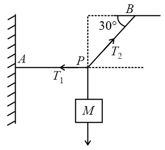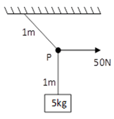Equilibrium of a Particle
Equilibrium of a Particle: Overview
This topic covers concepts, such as, Equilibrium of Forces, Concurrent Forces & Resolution of a Force etc.
Important Questions on Equilibrium of a Particle
A block of mass is placed on a smooth wedge of inclination . The whole system is accelerated horizontally so that the block does not slip on the wedge. The force exerted by the wedge on the block ( is acceleration due to gravity) will be
Two cubes of masses and be on two frictionless slopes of block A which rests on a horizontal table. The cubes are connected by a string which passes over a pulley as shown in the figure. To what horizontal acceleration f should the whole system (that is the blocks and cubes) be subjected so that the cubes do not slide down the planes? What is the tension of the string in this situation?
The pulleys and strings shown in the figure are smooth and of negligible mass. For the system to remain in equilibrium, the angle should be :-
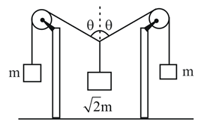
If a charge is placed at the centre of the line joining two equal charges each such that the entire system is in equilibrium, then the value of is:
The mass moves in a circular arc of angular amplitude . The minimum coefficient of friction between and surface of table to prevent slipping is,
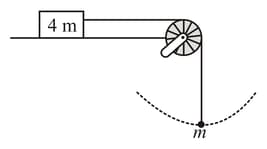
A man of mass stands on a frame of mass . He pulls on a light rope which passes over a pulley. The other end of the rope is attached to the frame. For the system to be in equilibrium what force man must exert on the rope?
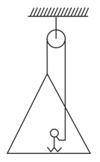
A body of mass is acted upon by two perpendicular forces and The magnitude and direction of the acceleration of the body respectively are:
A force is inclined at to the horizontal. If its component in the horizontal direction is then magnitude of the vertical component of force is approximately:
The forces, which meet at one point but their lines of action do not lie in one plane, are called:-
For next two question please follow the same
The system is released from rest with both the spring in unstretched positions. Mass of each block is 1 kg and force constant of each spring is 10 N/m.
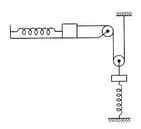
Extension of horizontal spring in equilibrium is
Three force , and acting along different directions on a body in the same plane and at the same time.
Three forces are applied on a body and body is in eqilibrium .It is infered about sum of any two forces together that it
A charged dust particle of radius is located in a horizontal electric field having an intensity of The surrounding medium is air with coefficient of viscosity . If the particle moves with a uniform horizontal speed , the number of electrons on it is . Find the value of (Take )
A copper ball of density , in diameter is immersed in oil of density . The charge in on the ball, if it remains just suspended in an electric field of intensity acting in upward direction is . Find the value of .
A block of mass is suspended by a massless rope of length from the ceiling. A force of is applied in the horizontal direction at the midpoint of the rope, as shown in the figure. The angle made by the rope with the vertical in equilibrium is: (Take)
There are four force acting at a point produced by strings as shown in figure, which is at rest. The force and are
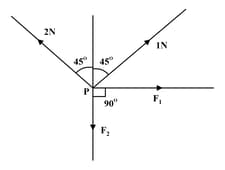
A cubical block of mass 5kg and side 10cm is pressed against a rough wall with a force F passing through the centre of cube inside a swimming pool as shown in the figure. Then: 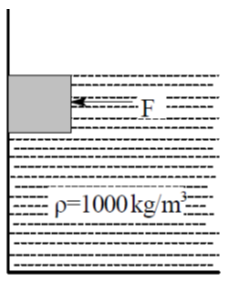
A rope of mass 8 kg and length 4 m is hanging vertically from a rigid support. The tension in the rope at a point 1 m from the support will be
An object is connected to rigid support through a light string. The value of so that block remains in equilibrium.
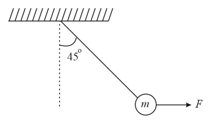
A mass is hung with a light inextensible string as shown in the figure. Find the tension of the horizontal string.
